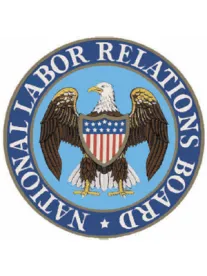Coming on the heels of the Labor Day holiday, in a long anticipated move, the National Labor Relations (“NLRB”) Board issued a draft of a new proposed joint employer standard, scheduled to be published on September 7, 2022. If ultimately implemented, the NLRB’s Notice of Proposed Rulemaking (“NPRM”) would nix the most recent joint employer standard (established in 2020) and return to the rule established by Browning-Ferris Industries of California, Inc., 362 NLRB 1599 (2015). The joint employment framework is used to determine whether more than one entity controls the terms and conditions of employees, and thus, can be responsible under the NLRA to negotiate with a union, among other things. Joint employer issues are most common between labor staffing firms and those using their services and franchise/franchisor relationships.
Since 2015, the NLRB has gone back-and-forth between two joint employment standards – one requiring direct control by both entities and the other focusing on potential “indirect” control. Democrat-majority Boards seek a broad rule which would include entities as joint employer that indirectly control or merely reserve the right to control the terms and conditions of employment of employees (2015 Browning Ferris decision); meanwhile, Republican-majority Boards have maintained the previously long-standing, traditional view that the joint employer framework must focus on whether a putative employer exercised “actual control” over the terms and conditions of employees (2018-2019 Rule).
Over just a few short years, both joint employment standards have received significant political backing from supporters and challenges by their respective detractors. In 2017, the then-Republican-majority Board first attempted to reverse the Browning-Ferris rule via Board decision in Hy-Brand Industrial Contractors, Ltd., 365 NLRB No. 156 (2017). However, the decision was later vacated after the NLRB Office of the Inspector General determined Board Member William Emmanuel’s participation in the Hy-Brand case violated an ethics rule (Exec. Order No. 13770(1)), because he had previously worked as a partner at Littler Mendelson, the law firm that represented an unsuccessful party in the Browning-Ferris litigation.
After Hy-Brand was vacated, the Trump Board looked to rulemaking to make their sought-after joint employer changes. In 2018, the Trump Board proposed and later (in 2020) implemented a rule reversing the Board’s holding in Browning-Ferris and returning the joint employment framework to the previous, narrower standard.
In the September 6, 2022 NPRM, the Board majority asserted that the Browning-Ferris rule is most consistent with both Supreme Court precedent and over a century of common law joint employment decisions. The NPRM announces: “[t]he proposed rule states that ‘two or more employers of the same particular employees are joint employers of those employees if the employers share or codetermine those matters governing employees’ essential terms and conditions of employment.’” Such language, the Board asserts, captures the ultimate meaning of joint employment as “not whether the [putative joint employer] actually exercised control over the details of the work, but whether he had a right to exercise that control.” NPRM, at 24 (citing treatises and several cases). The Board insists the NPRM is consistent with the joint employment frameworks endorsed by several Courts of Appeal, including the Third Circuit and the D.C. Circuit.
Furthermore, citing “shortcomings” of the 2020 rule’s specific and exclusive list of essential terms and conditions of employment, the NPRM would also expand the definition of “essential terms and conditions of employment” by including workplace health and safety, assignments, and work rules and directions governing the manner, means, or methods of work performance. Importantly, the new list is also specifically not exhaustive or limiting.
The two Republican Board members dissented to the issuance of the NPRM, stating that the NPRM is both legally incorrect and simply comes too soon after the 2020 rulemaking, which, among other things, could prevent the ability to provide meaningful guidance to employers regarding joint employment issues.
The Board seeks public comment on the NPRM for the next sixty (60) days — comments must be received by the NLRB on or before November 7, 2022, and reply comments must be received on or before November 21, 2022. It is anticipated that the Board will move forward with the NPRM and implement it as a Final Rule shortly after the comment period expires.
Any such Final Rule will greatly expand the potential for labor litigation for employers that have relationships with staffing agencies, are part of a franchise model, or even use outside organizations to handle certain aspects of their employees’ working conditions, such as payroll companies.




 />i
/>i

